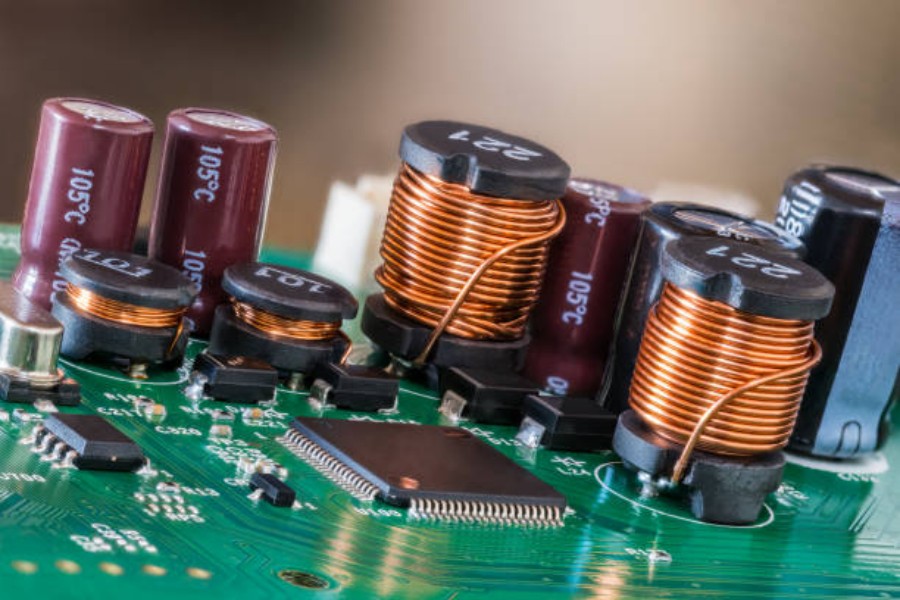Table of Contents

Introduction
An inductor is a passive component that stores energy in a magnetic field. It is commonly used in AC and DC circuits for various applications such as power supplies, filters, transformers, and motor control. In this article, we will discuss the basics of inductors, their properties, and how they work in AC and DC systems.
What is an Inductor?
An inductor is a component that resists changes in current flow by storing energy in a magnetic field. It is made of a coil of wire wound around a core material. When a current flows through the coil, it creates a magnetic field that stores energy. The magnitude of the magnetic field is proportional to the current flowing through the coil.
Inductance and Inductive Reactance
Inductance is the property of an inductor that determines the amount of energy it can store in a magnetic field. It is measured in Henries (H) and is proportional to the number of turns in the coil and the core material. The inductor's inductive reactance is the opposition it provides to a change in current flow. It is measured in Ohms (Ω) and is proportional to the frequency of the signal passing through the inductor.
Inductors in DC Systems
In a DC circuit, an inductor acts like a short circuit when the current is steady-state and does not change. When the current changes, the inductor acts like an open circuit and opposes the change in current flow. This property is used in DC power supplies and filters to smooth out voltage fluctuations and protect the circuit from sudden changes. Inductors are also used in DC motor control to control the speed and torque of a motor.
Inductors in AC Systems
In an AC circuit, the current flow changes polarity and direction, creating a constantly changing magnetic field. The inductor stores energy when the current is rising and releases it when the current is falling. This results in a phase shift between the voltage and current. Inductors are used in AC circuits as filters, transformers, and impedance matching networks.
Types of Inductors
There are many types of inductors, each with its unique characteristics. Common types include air-core, iron-core, ferrite-core, toroidal-core, and multilayer chip inductors. Each type has different properties such as inductance, saturation, Q factor, and self-resonance frequency. The choice of inductor depends on the specific requirements of the circuit.
Inductors in High-Frequency Circuits
In high-frequency circuits, the inductance of an inductor becomes a significant factor. The self-resonance frequency of an inductor is the frequency at which its inductance and capacitance cancel each other out, leading to a sharp increase in impedance. This property is used in RF filters and resonant circuits. Ferrite-core and multilayer chip inductors are commonly used in high-frequency applications due to their high Q factor and self-resonance frequency.
Inductor Saturation and Core Material
Inductors have a limit to the amount of energy they can store in a magnetic field before saturating. This is the point at which the inductor's inductance drops significantly, leading to a decrease in performance. The core material of an inductor plays a significant role in determining its saturation point. Iron-core inductors have a high saturation point, making them suitable for high-power applications. Ferrite-core inductors have a lower saturation point but higher Q factor, making them suitable for high-frequency applications.
Inductor Design Considerations
When designing a circuit, various factors must be taken into consideration when choosing an inductor. These factors include inductance, current rating, saturation, Q factor, self-resonance frequency, and temperature coefficient. The size and shape of the inductor also play a crucial role in determining the performance and stability of the circuit.
Conclusion
Inductors are essential components in AC and DC circuits for various applications. They store energy in a magnetic field and resist changes in current flow. The choice of inductor depends on the specific requirements of the circuit, including inductance, saturation, Q factor, self-resonance frequency, and temperature coefficient. Understanding the basics of inductors and their properties is crucial in designing effective and efficient circuits.
